Tutorial
How to Lengthen Your Back Rise
Hello my lovelies and thank you for visiting with me today on this beautiful Monday here in Australia. I hope that you have all loved seeing the tester pics of the new Harper Pants over at the shop and I am sure you will agree with me that each and every tester looks sensational wearing their stunning Harper Pants.
Today I am going to talk with you all about back rises – or back crotch lengths – and what alterations you have to do if your rise is longer than the pattern allows for.
I see so much misinformation posted on the internet and tend to get a bit “crazy” when I read much of the incorrect advice given for this very simple alteration.
Lots of factors contribute to the need for a back rise alteration – your pelvic floor height, pelvic frame, your skeletal stance and also your shape of your bum. I have a very long pelvic frame and have always needed an massive alteration in rise depths – both front and back.
Once you work out what you need to do – and how much you have to alter in Designer Stitch patterns – then this alteration should be an automatic thing in all of my pants patterns going forward for your future sewing.
As I use the same fitting blocks for each of my styles you will get the same general “fit” from each style that you purchase. Given that please keep in mind that an alter on a knit pattern will not be the same as an alter on a woven pattern.
Okay – so lets have a look at what we have to do to lengthen our back rise.
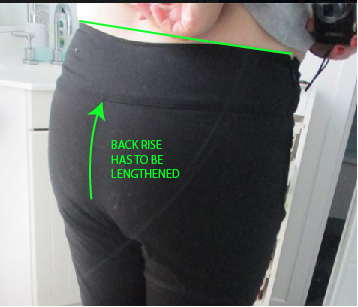
The above picture shows that the CB is dragging down and not sitting at the true waist. You can also see that it is cutting into the buttock cheeks a bit.
THE INCORRECT WAY TO ALTER YOUR BACK RISE FOR EXTRA LENGTH.
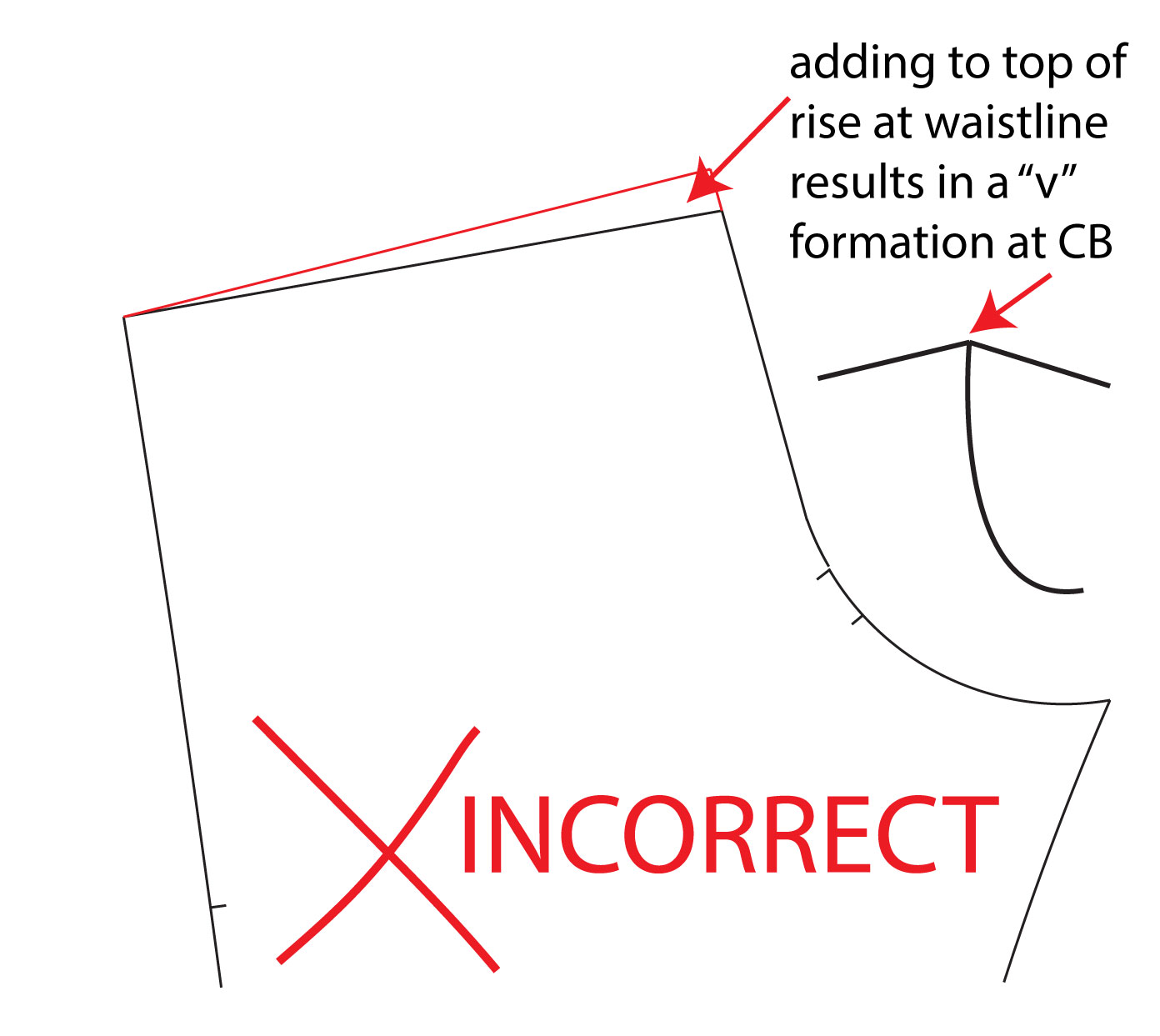
I see the above alteration a lot in my travels on the net. It is incorrect where it advises you to add to the top of the waistline to give you the extra length. The top addition cannot shift itself down into your body and if it did so it would actually create a pleat in your fabric. The addition at the top will only result in a “v” formation at the CB of your waistline.

I also see this above alteration recommended as well. Again the fabric added to the fork will not shift on itself and move back into the rise where the wearer needs it. This alteration is suitable for inner thigh fullness only – of which I detail below.
THE CORRECT WAY TO ALTER YOUR BACK RISE FOR EXTRA LENGTH.
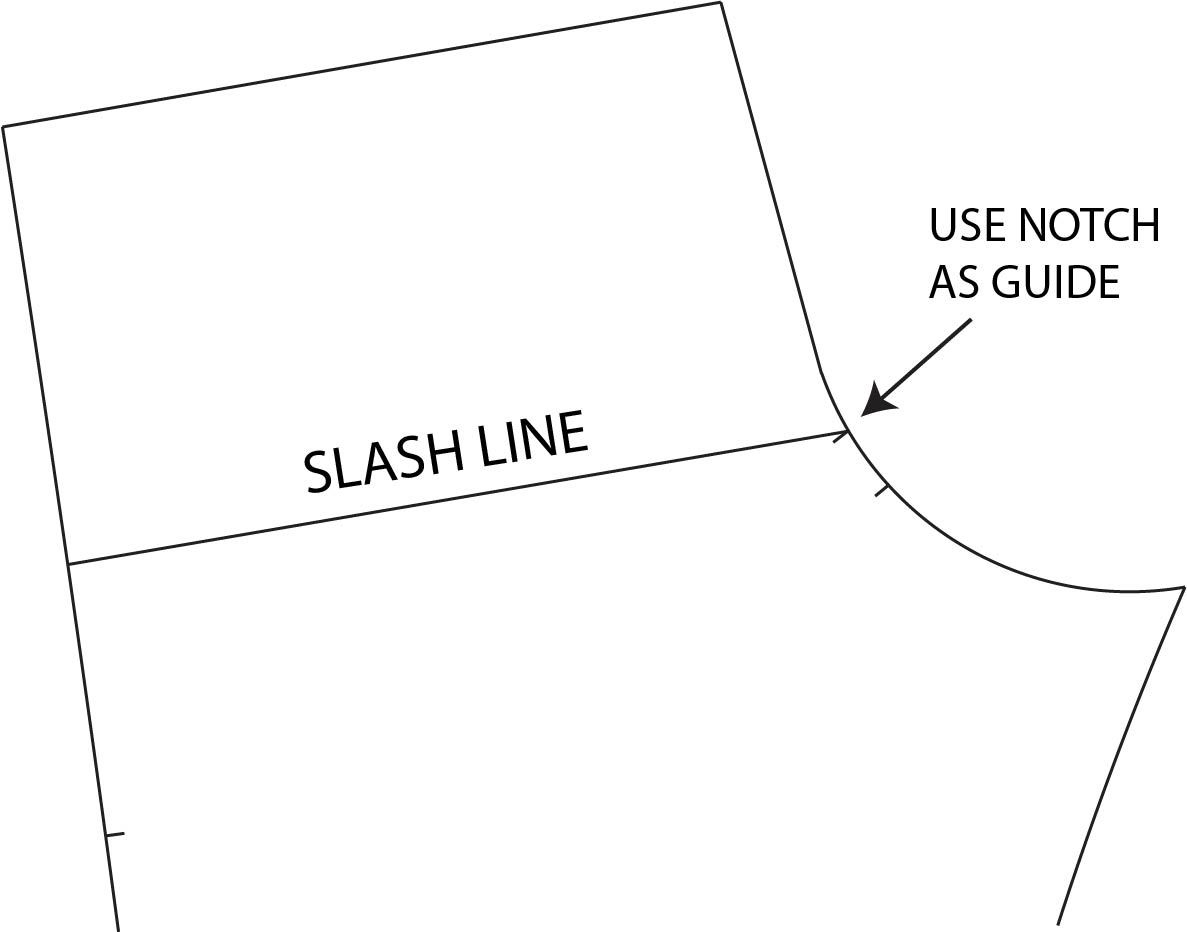
Step 1 : Working on your back pattern piece draw a line at right angles – perpendicular – to your back cutting edge and square across to the side seam. You can use your notches as a guide but just make sure your line is on the straight part of the cutting edge – not in the curved area. The Harper Pants only have a 6mm (1/4″) seam allowance but if you were working on a woven pattern with 1cms (3/8″) or 1.5 cms (5/8″) seam allowance you would also mark on your pattern your stitching line.
Step 2 : Slash along this entire line to divide the pattern into 2 pieces.
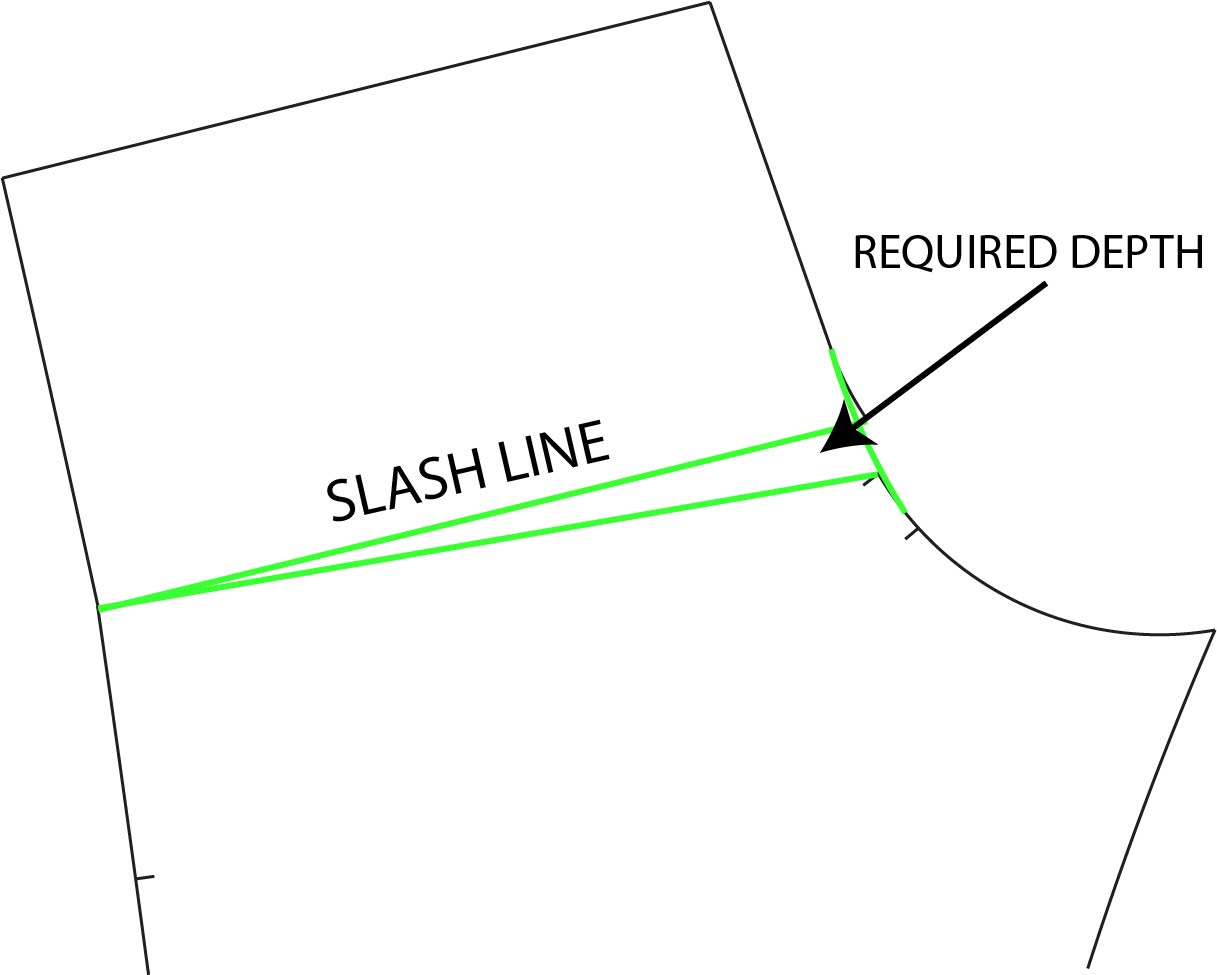
Step 3 : Pivoting from the side seam you can now open up the back rise the required amount. If you have a large seam allowance in play you would measure the amounts at the stitching line – not the cutting edge.
It is very hard to determine the correct amount you need without have a trial (toile) garment made up to try on yourself. Remember – as I have explained above – a lot of factors contribute to how much is to be added. It is worthwhile to make up your first toile as I recommend – work out how much alteration you need – and then proceed with the pattern alter. Then you are sure of the amounts and there is no guess work.
Step 4 : With a pencil line blend your cutting edge with a smooth continuous line.
Done !!!….and wasn’t that Easy xx
THE CORRECT WAY TO ALTER FOR FULLER INSIDE THIGHS.
This is a picture of my lovely Kate who blogs at Needles to Say. Kate only needs a marginal back rise length adjustment but she also needed an inside thigh adjust. When making the Harper Pants I have detailed in the sewing instructions that you must baste a standard leg together and wear them for at least 30 minutes to “see” what the fabric will do – your body heat will stretch the fabric – some fabrics will stretch more than others – but TRUST ME – it will stretch.
Given this Kate still needed a tad more in her back inner thighs just under the fork of her back pattern piece.
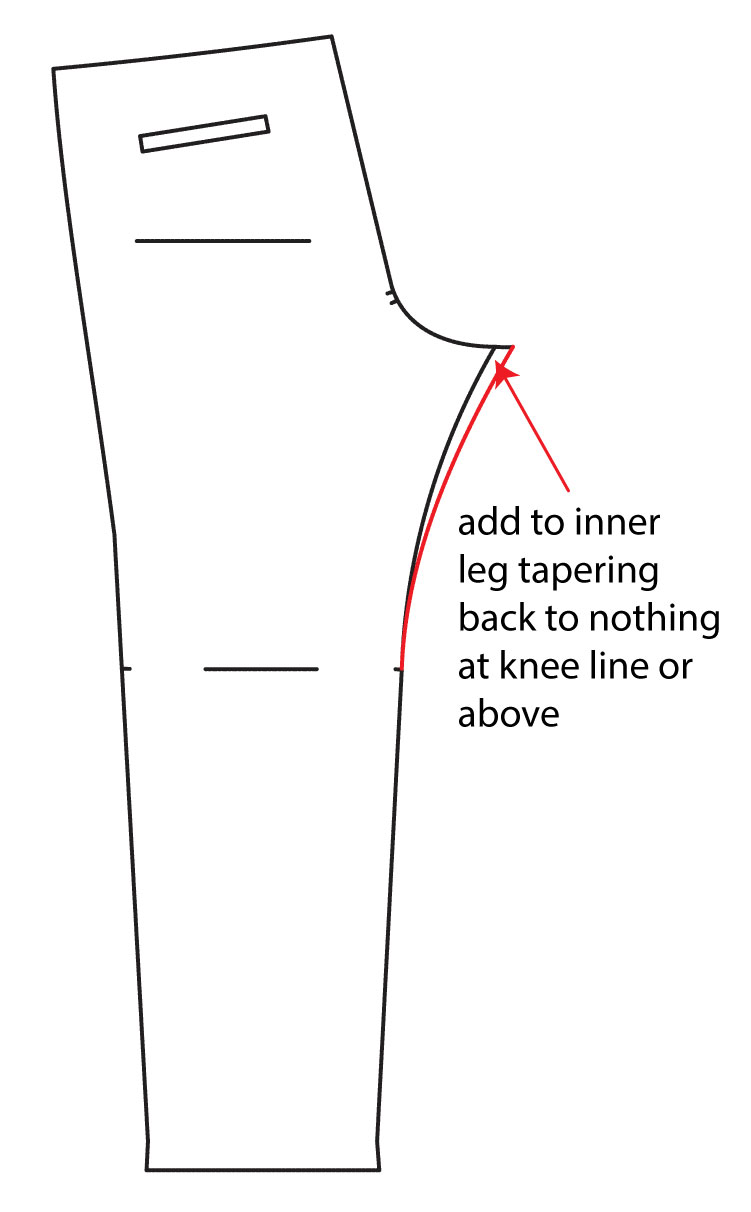
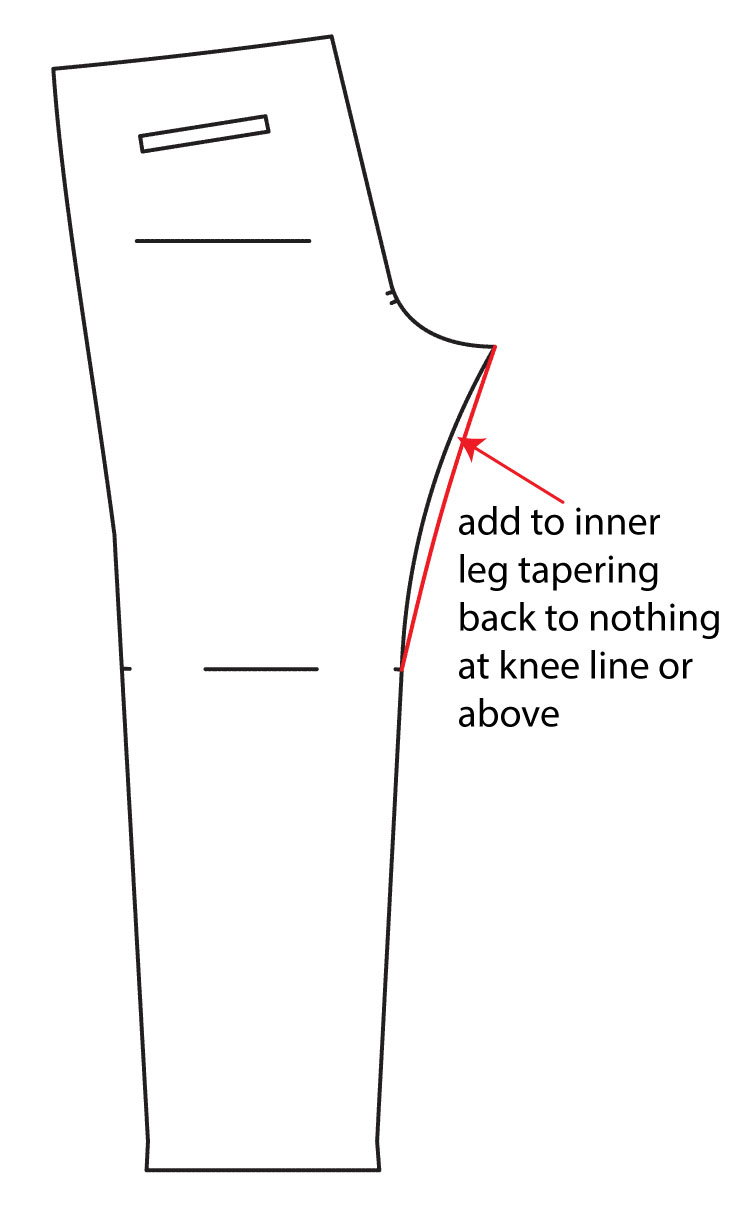
The above illustrations show 2 possibilities –
1. Lengthening the fork and adding width to the inner leg gives both extra length in between the legs for rise and also extra width for inner thighs.
2. Adding to the inner leg only gives extra width for inner thighs only.
If you find that the pants are cutting in just a tad – a very small amount – between your lower buttocks the first alteration is what you would use. Just make sure your waistline is not pulled down as in the first picture above. If this is happening the tiny extra you are adding to your fork will not stop your buttocks from being divided.
If you find that the pants are just creating strain lines pointing to the inside of your thighs the second alteration would be what you would use.
But given that – it is much easier to add on more than you require and then trim away than trying to grab back extra width/depth that you don’t have !!!.
I hope that you can add this to your sewing and fitting repertoire.
And don’t forget the STUNNING new Harper Pants.
Cheerio
Ann at Designer Stitch.
And why not visit our blog tutorial for a step by step photo guide on how to create the Harper Pants Faux Back Welt Pockets.


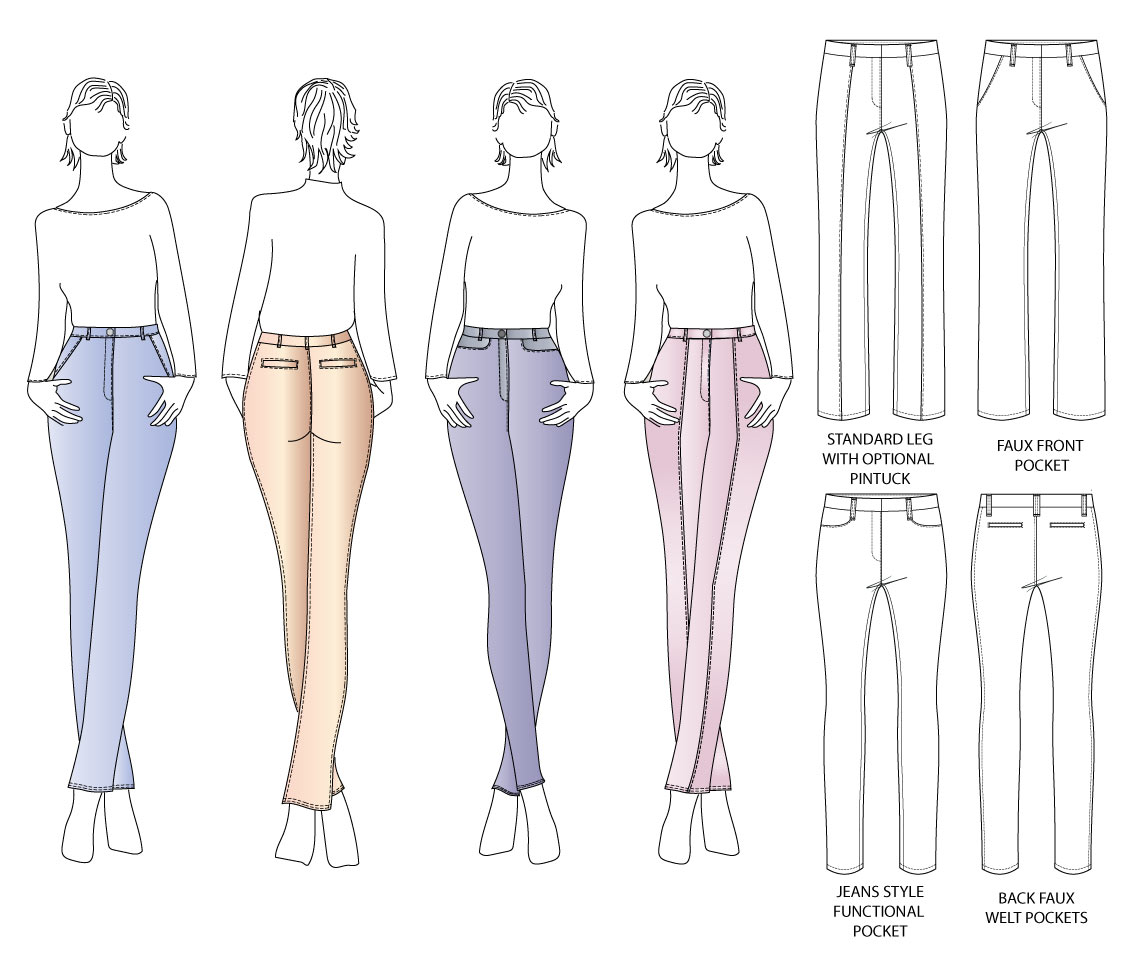

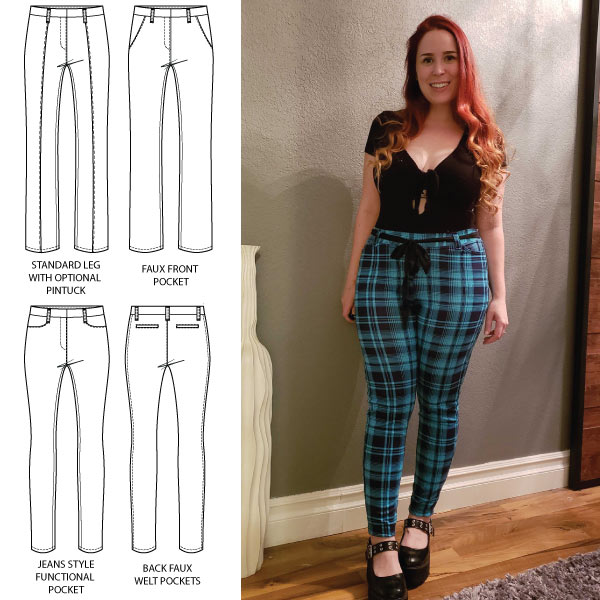
This was great info rising the back. Thanks. I, also need to know how to enlarge the sides and still have the pockets (likewhat is on jeans) to fit nice. I always add an inch on the sides from waist down to below hips . Thanks
Great instructions and perfect illustrations!
Thank you very much!!!
Hi. If you open up the back crotch to add length it looks like this slants the centre back seam more. I have a flat derriere which works best with a much less angled centre back seam. However, I am long in the back crotch as well. If I were to do this alteration to add length to the back crotch seam then would I re-straighten the CB seam then subtract from the side seam the amount I needed to add to get the CB seam angle back to its original position?
Can you add front pockets to the Dylan pants?
You could add pockets to the side panels but you would have to rejig the upper side front panels.